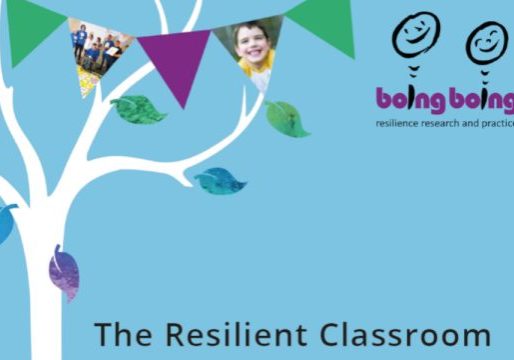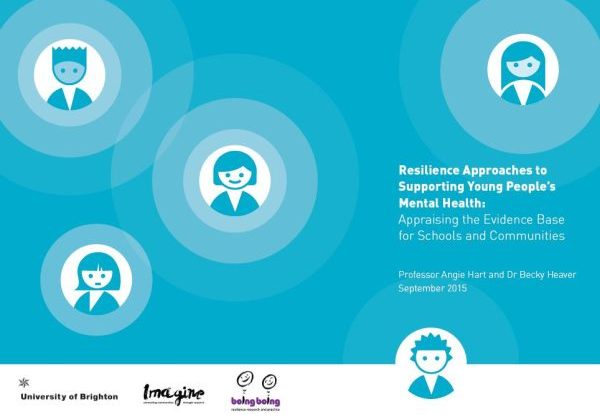Audit: Getting to grips with what you are already doing in your school
Key points:
• A systematic approach to understanding your school and identifying where and what you might do to better promote resilience
• Help for the whole school community to look through a ‘resilience lens’ in order to close the gap for disadvantaged pupils or those facing additional challenges
• There’s a clear link in the evidence base between building resilience and increasing attainment
What’s it all about?
Hopefully you have the energy and time to get cracking on finding out about the whole school in relation to promoting Academic Resilience.
There is overwhelming evidence supporting the link between resilience and attainment. If you are a Head or maybe a member of the senior leadership team we’d love you to be evangelical about all this and shout about it at every opportunity.
But we suspect you’d like to have a clearer idea about where you need to focus your energy. So, if you are up for it, why not take a systematic approach to getting to grips with what you already do? Let’s call it an audit…

Audit because:
• You want to close the gap for disadvantaged pupils and ensure they make the same progress as other pupils and you need a starting place for action
• You want to find out what is already happening in the school that is contributing to promoting Academic Resilience – and gather that information in to one place
• You want to engage others in generating ideas about what else you can try in school
What will you be auditing?
Basically through activities such as surveys, focus groups and workshops you are asking ‘How well are we helping our disadvantaged pupils to do better than might be expected?’
You can probably come up with lots of ways of doing this in your school. To help you we have developed a few example tools (and we’ve tried them out and been told they were useful).
In every case you can borrow bits and make them your own or add other ways – our approach is to help you off the starting blocks and on your journey.
The tools are basically questions based on research evidence about what works and applied to the school community. The idea is to get the answers from a variety of perspectives such as pupils, parents, and staff.
Every aspect of school life has potential to contribute – the audit is about finding areas where you might strengthen what you do or improve on an approach.
Is it a proper audit?
Much of the information you gather will be qualitative: experiences, personal and professional perspectives, and so on.
Overall it will paint a picture of how the school is doing in relation to various aspects of academic resilience whilst generating a sense of what you might improve.
The depth of questioning and the breadth of what you look at and who you ask is all down to you. It is not a rigid formulaic exercise; it is purposefully simple and flexible.
We suggest you only ask questions if you are prepared to do something about the answers!
Too tired?
If we haven’t persuaded you, take heart. Even if you only do a few things, you will probably generate ideas and set up chains of activities that will help disadvantaged pupils do better than you might have expected.
If you have the energy to do just one thing, book a time in the school calendar to do our Resilience Zap. This gives you a step-by-step guide and notes to run a half a day workshop with staff in your school.
But if you are up for a broader and deeper look then there are lots of things you can do.
The audit process
Use our tools to develop a baseline and a focused plan for the school – the questions they help you to explore are based on evidence of what works.
Add up all the findings from the different activities and you begin to get a big picture, maybe even a sense of the culture, across the school in relation to academic resilience.
We’ve picked a few things to audit against across all areas of school life – if you want to know how it all links to the evidence in ‘What is academic resilience?’
The audit table reviews what questions you will ask within the school, and gives hints about what might be explored in response to these questions
So here’s an idea as to how you might organise your ‘finding out’ activities, read an overview of the process (ppt) before you dive in.
Audit guidance
Identify a leader for the process
Preferably someone from the Senior Leadership Team because they can really make things happen across the whole school system.
Remember – the more people who are on the mission, the better chance of success. A clear leader for the process will also ensure things get done and don’t get forgotten in the busy day to day life of school.
The lead is the co-ordinator, the chief ‘reflector’ and the champion. In our experience, a committed deputy head is perfect for this job if you are aiming to make changes across the school.
We suggest the lead has a good old read up about the evidence of what works – dip in and out of any of the resources on this website for a starter, in particular information about Academic Resilience.
Early reflections
Start reflecting – if someone from SLT is leading this then sit down together as a leadership team (or do it on their behalf if you are really short of time) and reflect on what you already do, what you think might be areas for improvement and what you might want to find out more about – using this handy traffic light questionnaire.
Decide what you want to find out more about (be careful not to exclude things because you think you know all about it when you might not – challenge yourself…is it our perception? have you tested it? …but remember don’t ask if you are not prepared to do something about it – a bit like a vulnerable child doesn’t deal well with being let down again – staff who are asked about their morale and then nothing happens will sink lower than if they’re not asked in the first place!).
Also PLEASE don’t leave out the hard parts like parents who are hard to engage, or pupils who challenge the school – these are sometimes the very people you need to engage to learn from. It’s worth spending more time on a few difficult areas you need to understand more about than lots of time on hearing more of what you probably already know.
Use of existing pupil data
Not all pupils are the same or start from the same place. Our approach is about being smart with data not only to tell you about individual progress but also to tell you about individual risk.
Look at what pupil data can tell you about your most at risk pupils – not just those who are on the radar now but those who might be in the future due to their needs and risk factors – depending on how resilient they are and what happens to them.
Risk in this context means someone potentially not making academic progress or reaching their potential due to barriers which are usually beyond their control. Risk can be cumulative. The more challenges a pupil faces the greater the risk. Indicators of risk can include poverty, learning disability, English as an additional language – all of which the school has data for.

Neglect, abuse or being in care, funnily enough, can make school work less of a priority. Poor attendance and behaviour is both a result of need and an indicator of further risk. ALL of these things can affect how a pupil feels and therefore how they perform.
Develop a way of identifying those at risk through collating individual pupil data: Download a Pyramid of Need Powerpoint slide for use in your school. The Pyramid of Need was developed at Hove Park School, a large secondary school in Brighton. It uses information about pupils to map needs at a whole school, year group and tutor group level.
Each vulnerability or risk factor is given a point rating and totalled for each pupil. Pupils are then sorted in to levels of need and photos of them are presented literally in pyramids with the most need/risk being at the top.
The photos make it real for staff – they sit in the staff room or in their Head of Year office, or see their tutor group and begin to recognise the faces that feature as either high, medium or low risk.
If a pupil is free school meal and nothing else, then they are at the bottom of the pyramid – indicating low risk but worth keeping an eye on. If they are FSM, looked after and at point 4 on the attendance framework, and point 2 on the behaviour framework then their accumulated points would mean they appear at the top of the pyramid.
The kind of things staff say about the pyramids:
“It makes me realise when I see them in my class that they may need a bit more attention than others.”
“If I see a face I already know on there especially when it’s someone I find difficult, then I think it just reminds me that they have probably got a lot of stuff going on in their life that I don’t know about – and it’s probably quite tough for them.”
Watch a short film about resilience work in Hove Park School for more on their approaches.

It’s a tool that gives a face to those who are challenged, and also to those we might not know about but who are at risk. The kinds of data you could collate might include behaviour, attendance, safeguarding information alongside LAC, SEN, EAL and FSM.
School community views
This is not scientific research. Presumably you don’t have the time and money for a longitudinal study, testing out your approaches on pupil cohorts and then analysing cause and impact on academic progress.
What you want is a quick look at how you are doing in relation to disadvantaged pupils. So here are some ideas about how you might find out.
Staff surveys
In order to support resilience in others, we really need to be resilient ourselves. This is a major challenge in many schools where the relentless pressure and the sheer number of interactions every day lay staff open to confrontations, changes and fresh problems over a sustained period of time.
How do you stop staff from flagging, flopping and flipping out – all before breakfast?
How resilient are the staff in your school?
It can take a brave leader to even go near that can of worms, never mind open it. So let’s consider what might make it worthwhile…
• The very fact that you are asking could be the first step to feeling more valued and listened to (assuming you do actually make a few changes on the back of the info!)
• Asking the staff about their resilience will give you some starting areas for action
• Raises staff awareness – not only of their own resilience but also the pupils and parents, and the kinds of things that can impact on it
There are loads of surveys out there on the internet about staff resilience – and you can download them often for free. The survey we have designed is based on the same set of principles and areas for action which we have taken from the evidence of what works.
There are two surveys to use (we would recommend both but the first one has more can of worms potential than the second so it’s up to you…!)
Staff resilience survey
Aimed at ALL staff – including support, maintenance, technicians, etc. This asks about how staff are feeling in terms of their own resilience and some key contributory areas such as sense of self direction, feeling supported and being supportive, contribution to school life, responsibility etc. It will also help you gather some ideas about what staff might want more of and what else could be done.
Download guidelines for conducting your staff audit
Download the staff resilience survey with further guidance
Staff and school survey
This asks staff about their understanding of academic resilience; how they personally, and the school as a whole, are doing in relation to promoting it; views and opinions about culture; and awareness of disadvantaged pupils.
Download the staff and school survey with guidance
Pupils
Pupils are ultimately your customers. You wouldn’t design a commercial product without consulting the very people you need to convince to buy it – well, the same principle applies here. Understanding how pupils experience the school is pupil ‘insight’ – and that’s valuable. You need to know what works now and get some insight in to what and how things could be improved.
Not everyone is the same of course, but even asking a handful of pupils, especially those you are targeting with more support such as the disadvantaged pupils, will give you a good ‘gist’ and a starting point.
We would encourage you to not just consult pupils but really engage them in developing new ways of doing things. Problem solving is a key resilience factor – so use this exercise to engage pupils and they get to practice problem solving at the same time!
Here are some things to try
Pupil Focus Groups: We suggest you think about holding a few groups. Also why not ask a more ‘neutral person to facilitate it – the school counsellor or an appropriate governor even. We also suggest you think about who to ask. When we tested our approach we tried groups of mixed ages and one group of ‘average’ pupils and one group of pupils with ‘challenging behaviour and social and emotional difficulties’.
Download the Pupil focus group exercise
The focus group process is basically about getting a conversation going. To help it along we developed a case study ‘story’ to tell the pupils and on which we could then base some of the questions and refer back to during discussion.
Download the ‘How do you solve a problem like Marino’ timeline
We called this exercise How do you solve a ‘problem’ like Marino? … Clearly a play on words and not just a reference to nuns singing in the Abbey or running up mountains!
Many schools have asked us about ‘problem pupils’ rather than pupils with problems so we just wanted to make this point. Marino, like Maria, is not ‘a problem’ but he does have quite a lot of problems to overcome or work around or get help with.
The story illustrates how life can take a downward turn which can impact on the way we behave and in Marino’s case ultimately leads to his academic performance also heading down the mountain!
Other ideas for pupil insight
• Adapt the staff survey and ask pupils the same questions
• Ask a group of pupils to be school leads for a day and get them to plan how they are going to do things like build rapport and relationships; encourage pupils to higher aspirations; what kind of behaviour they will model for other staff; make school feel safe; etc. – listen to their ideas and learn!
Ask other people in the school community
Don’t just stop at pupils, staff and parents. The staff surveys and the pupil focus group exercises are just examples of ways to ask questions – all of it can be adapted for use with governors; local community members; external community groups and agencies.
Also VALUABLE people to talk to are those that come in to school from external agencies. Counsellors, educational psychologists, family support workers, alternative education providers; activity based organisations.
They can often tell you about the ‘feel’ of the school. Stories, signs and symbols that are picked up by visitors tell you about the culture or ethos of a school and also how it is perceived by those on the outside – all valuable info for your audit (and for anticipating how it might feel for inspectors that walk through the door).
Questions you might ask:
• How does the school feel in terms of safety, behaviour and attitude of staff and pupils etc?
• What do you notice about our school that is different (good or bad) compared to other schools you go to?
• How do staff treat you?
• How do we talk about our pupils? what language do we use?
• What do we seem to expect for our pupils? does it differ for certain pupil groups?
It may feel quite threatening, choose a few supportive people with a balanced perspective and tell them why you are asking. Who doesn’t like to be asked and who doesn’t respond well to being trusted to tell you their answers in a constructive manner?
Most people rise to the trusted challenge well and will be more likely to support you further or at the very least take a positive interest in your mission.
It’s the same principle as asking the pupils – get them on board and the ship will sail further with more hands on deck!
All of the above will be enhanced and added to with a Resilience Zap
We highly recommend that you do the Resilience Zap and combine it with all, or some, of the above methods for auditing the school.


